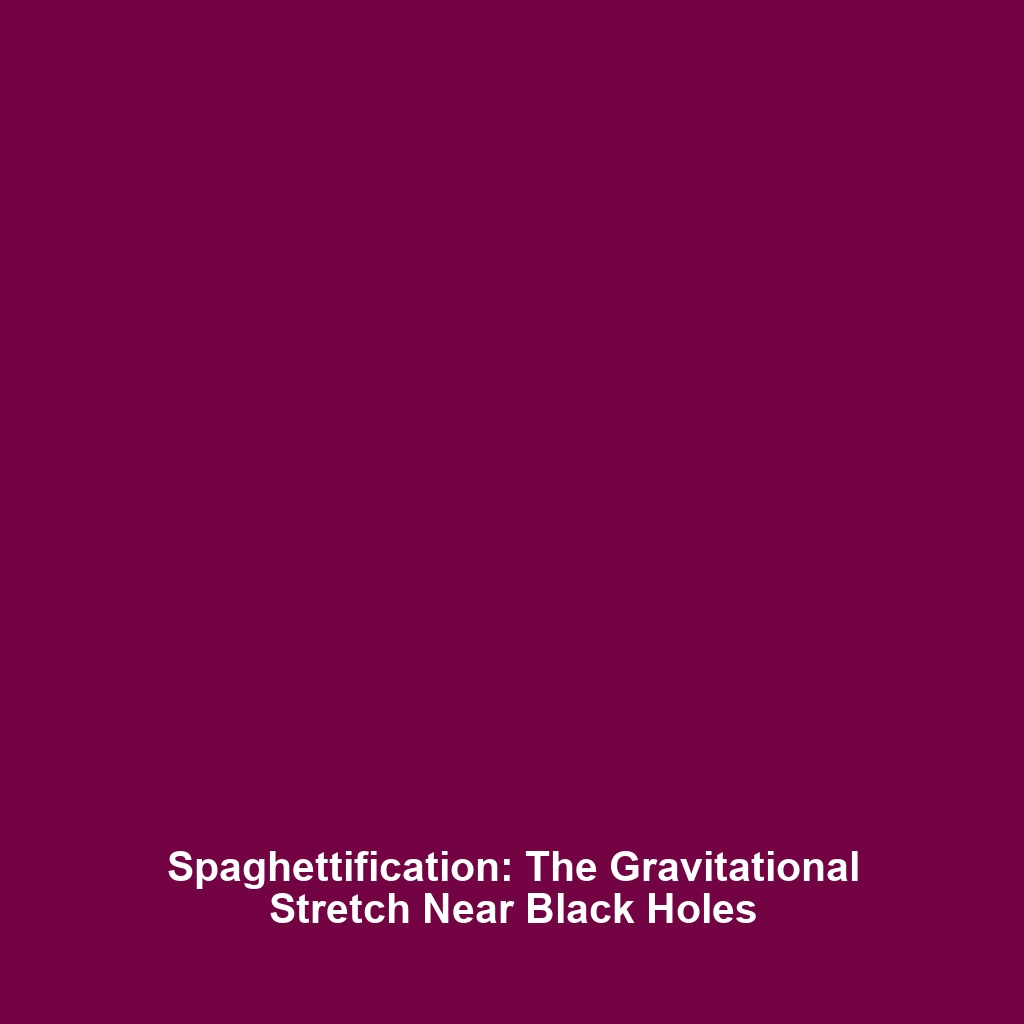Spaghettification: The Stretching and Pulling of Objects as They Approach a Black Hole’s Event Horizon
Spaghettification is a fascinating and extreme phenomenon that occurs when an object approaches a black hole’s event horizon,
the boundary beyond which nothing can escape the gravitational pull of the black hole. This process involves the stretching and
pulling of matter, leading to some of the most violent and intriguing consequences in astrophysics. Understanding spaghettification
not only sheds light on the nature of black holes but also enhances our comprehension of gravitational forces and their effects
on matter in the universe.
Key Concepts of Spaghettification
To grasp the concept of spaghettification, it is essential to understand several key principles related to black holes and
their gravitational fields:
- Event Horizon: The event horizon is the point of no return around a black hole. Once crossed, objects cannot escape.
- Tidal Forces: As an object approaches a black hole, the difference in gravitational pull between the side nearest to the
black hole and the far side creates stretching forces, leading to spaghettification. - Singularity: The core of a black hole where density becomes infinite and current physical laws cease to function.
These phenomena illustrate the extreme environments of black holes and underscore the unique interactions of gravity that define
spaghettification.
Applications and Real-World Uses
While spaghettification may seem like a theoretical concept, it has significant implications in our understanding of the universe.
Some applications include:
- Astrophysical Simulations: Understanding spaghettification informs models of black hole interactions with surrounding matter.
- Gravitational Wave Detection: The study of spaghettification helps improve our understanding of black hole mergers, which can create detectable gravitational waves.
These applications illustrate how spaghettification is used to enhance knowledge within the category of black holes, pushing the
boundaries of astrophysical research.
Current Challenges in Studying Spaghettification
Despite its significance, there are several challenges associated with the study of spaghettification:
- Limited Observational Data: Black holes are often obscured from direct observation, complicating research.
- Modeling Complexities: Simulating the conditions of spaghettification accurately requires significant computational power and innovative techniques.
- Interdisciplinary Knowledge: The phenomenon requires knowledge of general relativity, physics, and astronomy, demanding collaboration across disciplines.
Future Research and Innovations
Future research in spaghettification is poised to advance our understanding of black holes. Upcoming innovations may include:
- Enhanced Gravitational Wave Detectors: Future technologies may allow for more accurate detection of gravitational waves, providing insight into black hole behavior.
- Advanced Simulation Software: Next-generation computational models could simulate extreme environments with increased precision, offering further understanding of spaghettification.
- Interdisciplinary Collaborations: Increased cooperation between physicists, astronomers, and computer scientists may lead to breakthrough research.
Conclusion
In conclusion, spaghettification is a critical concept in understanding the interactions between matter and black holes.
As we continue to explore this unique phenomenon, the implications for astrophysics and our grasp of gravitational forces
will grow. For those interested in the intricacies of black holes, further reading on topics such as general relativity and
gravitational waves may enhance your understanding. Stay informed about ongoing research as we continue to uncover the mysteries of the universe.

Leave a Reply